by Lisa Cooke | Jun 15, 2016 | 01 What's New, Records & databases, Research Skills |
The US Public Records Index can be useful for genealogy–if you understand what it is and how to use it properly. Here’s an example and some tips.
Not long Russ sent in this tip recommending the US Public Records Index for genealogy:
“I was listening to Genealogy Gems Podcast 181 [in which] you were talking about where do we search while we are waiting for the 1950 Census….I recently discovered a wonderful resource, on Ancestry.com, that I have used along with city directories. The name of the record group doesn’t sound interesting but it can be a Gem for you: the US Public Record Index, 1950-1993, Volume 1 and 2. Volume 1 is far more interesting with more data. A search will return a name AND birth date, along with more than one address, zip code and sometimes phone numbers.”
Here’s a sample search result:
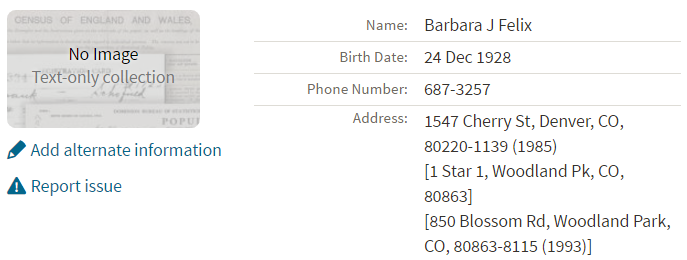
Russ kindly sent me Ancestry’s description of its online database for Volume 1, which says that original data comes from public records spanning all 50 states, such as voter registration lists, public record filings, historical residential records and other household database listings.
Collection Profile
What: U.S. Public Records Index
Where: Ancestry, FamilySearch, MyHeritage
Years Spanned: 1950-2009
Source Type: Lacking original source citations. “Hints to go on and follow up with further research into verifiable sources.”
Then he shared the following example of using the US Public Records Index to find recent relatives that he can’t look up yet in the 1950 census:
“I had a hint for a cousin in a yearbook. I know that she recently lived in Philadelphia, Pennsylvania. I didn’t know where she went to college and I know her birthday. The name is not unique, not also not common. At the same time, I had the hint for the Public Record Index. You know those things we can’t use in a proof argument, but there [she] was in Philadelphia. The yearbook had her picture and only her name, not spelled the way I know it, but the Public Record Index puts her in Philadelphia at the right time and place.
I have seen 2 or 3 addresses for folks in the 1980s and 1990s in these indexes. Not all addresses have dates, but some do. I have one cousin with 5 addresses since 1983 and he won’t be in a census until the 1960 Census Records are released.”
Russ blogs about his family history at worthy2be.wordpress.com/. Thanks for the tip!
The U.S. Public Records Index pops up in my search results sometimes, too. Both volume 1 and volume 2 are searchable on Ancestry.com, as Russ says, in separate databases. Each has over 400,000 records in it. There’s also a free partial version of this database for 1970-2009 at FamilySearch.org and yet a third version at MyHeritage, with 816 million records, with nearly the same time frame. The FamilySearch database says its data comes from “telephone directories, property tax assessments, credit applications, and other records available to the public.”
More on the US Public Records Index
Here are a few tips worth mentioning about the US Public Records Index. Some of these points come from the FamilySearch wiki:
- Not everyone who lived in the U.S. appears in the index, and you’re more likely to find birth information for those born between 1900 and 1990. What you’ll find is primarily where someone lived, and often when they lived there.
- It’s rarely possible to positively identify a relative in this index since there’s limited information and it spans the entire country for up to a half-century, and you can’t follow up on the record it comes from because the index doesn’t say where individual records come from. So as Russ says, this is a great resource to use in combination with other records. It’s a similar concept to the way you might consult family trees that lack sources: hints to go on and follow up with further research into verifiable sources.
- When you find more recent listings, you can sometimes find telephone numbers for living distant relatives. If the thought of cold-calling distant relatives seems a little intimidating, listen to my Family History: Genealogy Made Easy podcast, episodes 14-15, for tips–and to get your courage up!
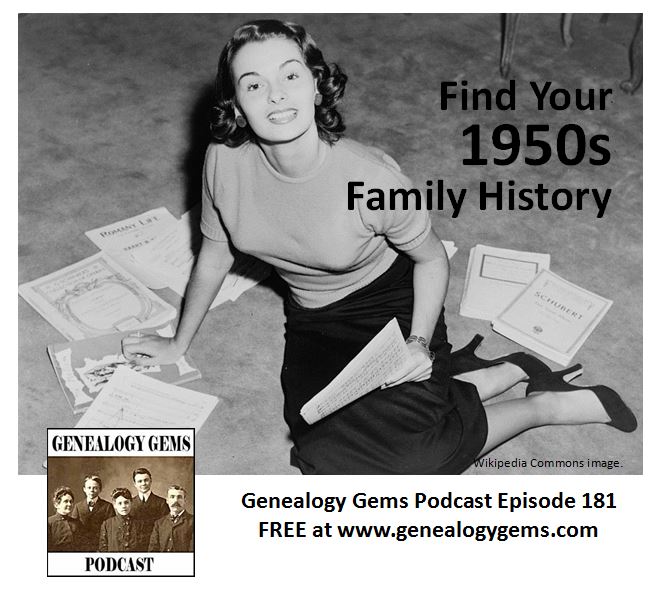 More Gems on Researching Recent Relatives
More Gems on Researching Recent Relatives
by Lisa Cooke | Jul 3, 2017 | 01 What's New, Interviewing
Is lack of time or lack of cooperation getting in the way of you capturing memories? Your descendants are depending on you to pass down the family’s history. Genealogy Gems readers and listeners share their creative solutions to the age old challenge of capturing the future’s history today!
Recently I wrote a post called
Remembering Dad with a Family History Interview Video. In that post I shared the video I made of my husband Bill’s interview about his father. I’ve been delighted to hear from so many of you Genealogy Gems readers about your own interview strategies for gleaning stories and memories from loved ones.
Sharon C. wrote to explain her creative approach to interviewing her mom:
As my mother grew older (she lived to be almost 94), her vision got very bad. So, I bought her a large screen T.V. Then, I attached my video camera to the T.V. and a microphone to her from my camera, and we went through her old photo albums, with my camera on the photos, but the photos projected to her on the large screen T.V. We then talked about the photos and I asked her questions about the people, but she saw the picture on her T.V. Her narrative and the pictures were recorded on my video. Voila!!! her pictures, her voice, her details, on the camera and she didn’t even realize that it was being recorded. She thought she was just discussing the pictures from the album. At one point, her two brothers were present and I was able to get their input as well, at the same time.
Patricia D. shares how she captures her husband’s stories without having to find time to do it in their busy schedule:
 Lisa, I enjoyed your article about trying to interview your husband, who is shy about being interviewed. My husband and I found a painless way to do an interview. When we are traveling he gets sleepy if no one is talking to him, so I decided interviewing him in an informal way about events in his life would serve two purposes. He wouldn’t get sleepy, and I would get information about his life story.
Lisa, I enjoyed your article about trying to interview your husband, who is shy about being interviewed. My husband and I found a painless way to do an interview. When we are traveling he gets sleepy if no one is talking to him, so I decided interviewing him in an informal way about events in his life would serve two purposes. He wouldn’t get sleepy, and I would get information about his life story.
I take my iPad when we’re traveling and as I ask him questions I type his responses into Pages (app). Usually one question leads to another, so we seldom run out of information. He enjoys reminiscing about the past, and I enjoy hearing it, since he seldom mentions it without being prodded.
When we get home I polish up what I have written and transfer it to my computer. I store it in a folder labeled ‘Don’s life.’ Eventually we will have enough to write the story of his life, with lots of pictures. And it’s completely painless.
This is a wonderful, creative way to capture stories and spend time with family!
Curt S. is not only capturing his stories for his family, but he’s also brightening the lives of others:
 Hi Lisa, I love the story about a lady interviewing her husband while driving to keep him awake and to share his life stories. I too came up with a neat way to share my life story. Every year at Christmas time when my family gathers together I seem to always be asked to tell one of my stories, as I have a lot of stories, mostly very funny stories. Even at my former work my boss and co-workers would ask me to tell certain stories again.
Hi Lisa, I love the story about a lady interviewing her husband while driving to keep him awake and to share his life stories. I too came up with a neat way to share my life story. Every year at Christmas time when my family gathers together I seem to always be asked to tell one of my stories, as I have a lot of stories, mostly very funny stories. Even at my former work my boss and co-workers would ask me to tell certain stories again.
So, it dawned on me that I needed to find a way to tell these stories so that I could leave a legacy to my kids and their descendants. We are always suggesting to others that they interview their living ancestors while they have the chance. So why not tell your own story.
To motivate myself to tell my stories, I created a blog, in which I tell one of my stories approx, once every other week. Then after I publish the blog story, I copy and paste into my Legacy 9 software, into the story feature, which then puts the story in chronological order that later can be published in a book format.
So here is the address to my blog. If you go there you will see the kind of stories I am telling. I have identified over two years worth of stories so far that I can share on my blog.
When it comes to family history, there is definitely an element of methodology – but that doesn’t mean there can’t also be creativity! Everyone’s family is different, and what works for some may not work for others. So don’t be afraid to put your own spin on research ideas, and customize them to work for you. Thank you to everyone who submitted their strategies, and I hope you’ve got at least one new idea to try out!
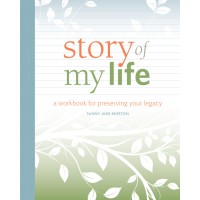
Family History Writing Resource
The Story of My Life workbook, written by our very own Sunny Morton, makes it easy to record your memories, and the memories of your loved ones. Simply follow the prompts to preserve memories from your entire life.
by Lisa Cooke | Apr 3, 2015 | 01 What's New, African-American, Ancestry, Australian, British, Canadian, Cemeteries, FamilySearch, Findmypast, Military, Records & databases, United States
Each Friday we share a list of selected new genealogy records online. Watch for records in which your ancestors might appear–and get inspired by the  kinds of records that may be out there waiting for you to discover. This week: Australian cemetery records, British military officer deaths, various U.S. passenger lists and North Carolina marriage records.
kinds of records that may be out there waiting for you to discover. This week: Australian cemetery records, British military officer deaths, various U.S. passenger lists and North Carolina marriage records.
AUSTRALIAN CEMETERY RECORDS. Two million indexed records have been added to the free Australia, Queensland Cemetery Records, 1802–1990 dataset at FamilySearch.org. According to the site, “The records include an index which combines several other indexes, cemetery transcriptions, burial and other records from cemeteries in Queensland….Cemetery records are especially helpful for identifying ancestors who were not recorded in other records, such as children who died young or women. They may also give clues to finding more information. In Australia, the first cemetery is reported to have been in Sydney in 1788.”
BRITISH MILITARY OFFICER DEATHS. FindMyPast’s new dataset, Royal Artillery Officer Deaths 1850-2011, lists the details of over 17,000 commissioned officers who were killed or died during the campaigns in Kosovo, Bosnia, Borneo and Iraq as well as the First and Second World Wars. It is estimated that since the regiment’s formation in May 1716, over 2.5 million men and women have served with the regiment. Each record includes a transcript of details found in the original records.
US PASSENGER LISTS. Browsable images were added to several existing US immigration records. Click here (and then scroll down) to view a table that has links directly to these datasets:
- For San Diego, CA:Airplane Passenger and Crew Lists, 1929–1954 and an apparently segregated Chinese Passenger and Crew Lists, 1905–1923;
- San Francisco, CA Passenger Lists, 1893–1953;
- Key West, FL Passenger Lists, 1898-1945;
- Minnesota Passenger Lists, 1910-1923;
- New York City, NY Passenger and Crew Lists Soundex (meaning an index based on how a name sounds), 1887-1921; (this is actually a new image collection)
- North Dakota Manifests of Immigrant Arrivals, 1910-1952 (this is also new).
NORTH CAROLINA (US) COUNTY MARRIAGES, 1741-2011. This new dataset on Ancestry “includes images of marriage bonds, licenses, certificates, and registers from 87 different counties.” According to an Ancestry blog post, some marriages have multiple records in this collection, like a bond and an indexed marriage record. This record set may be particularly useful for those tracing African-American marriages, as they “reference the joining of couples living as man and wife dating back to 1820, and possibly earlier…. Sometimes they also include the names of their former owners.” There’s a free, similar-looking dataset at FamilySearch, but the dates aren’t as extensive (it covers 1762-1979).
 Tip: When searching within record sets like these, read the record collection description! Sometimes you are just seeing a partial collection that is being updated on an ongoing basis. Some years or locales may be missing from an otherwise complete record set.
Tip: When searching within record sets like these, read the record collection description! Sometimes you are just seeing a partial collection that is being updated on an ongoing basis. Some years or locales may be missing from an otherwise complete record set.
When you have questions that aren’t answered in the record collection description online, Google them! Use keywords like the type of record (“marriage records”) and the missing locale (“Burdett County”) to see whether other sites can lead you to these records or confirm that they don’t exist. Learn more about advanced Google searching for genealogy in the fully-updated 2nd edition of The Genealogist’s Google Toolbox by Lisa Louise Cooke.
by Lisa Cooke | Mar 3, 2017 | 01 What's New, African-American, Records & databases
African-American county slave records are just one of two new collections to broaden your genealogy research. Also this week, records pertaining to the elite group of Masons in North Carolina, naturalization records from Michigan, and church records from New York. Lastly, take a look at the new records available for Northamptonshire, England!
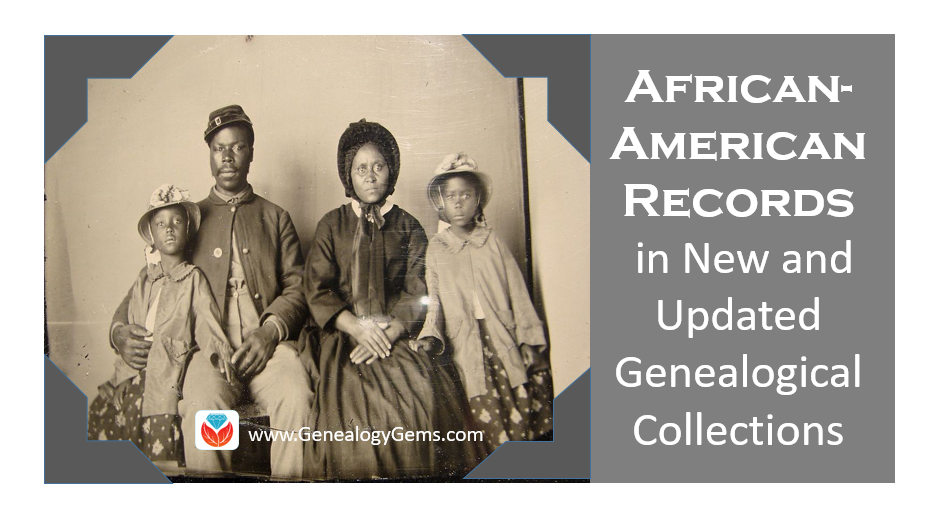
United States – Pennsylvania – African-American County Slave Records
This new database from Ancestry titled Pennsylvania, County Slave Records, 1780-1834 is a great find. This collection contains records pertaining to slaves and free persons from Adams, Bedford, Bucks, Centre, Cumberland, Fayette, Lancaster, and Washington counties, as well as Lancaster City. The types of records include: petitions to keep slaves past the age of twenty-eight, records of “negro” and “mulatto” children, as well as birth and residence registers. Various other records, such as apprenticeship records, bills of sale, and manumissions also occasionally appear.
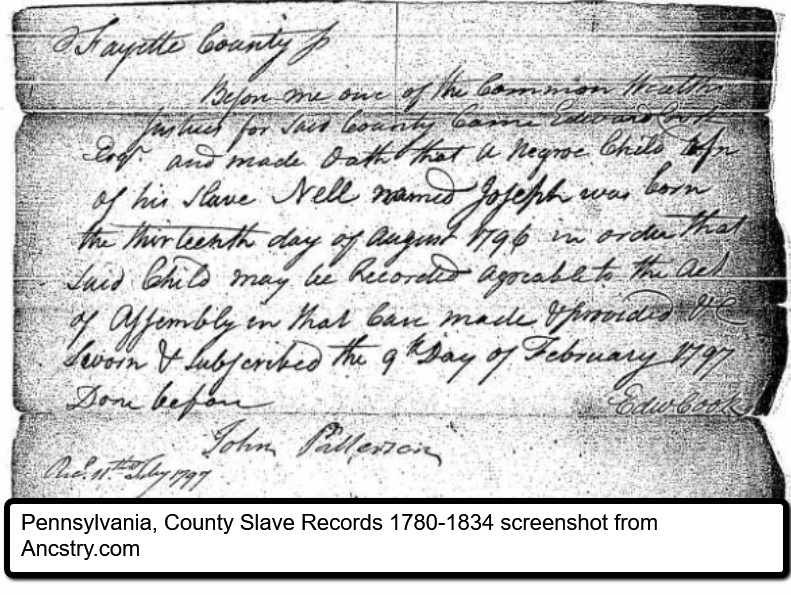
Entries include:
– the slave’s name (typically only a given name)
– description (e.g., Negro woman, negro man, etc.)
– owner
– birth date
– occasionally, the name of a mother
United States – Philadelphia, Pennsylvania – Finding Family After Slavery
This unique project by Villanova University and Mother Bethel AME Church in Philadelphia will make classified ads of the past easily accessible. The goal of “Last Seen: Finding Family After Slavery” is to make accessible an online database of snapshots from history, which hold names of former slaves, owners, traders, plantation locations, and relatives gone missing.
So far, project researchers have uploaded and transcribed 1,000 ads published in six newspapers from 1863 to 1902. These newspapers include: the South Carolina Leader in Charleston, the Colored Citizen in Cincinnati, the Free Man’s Press in Galveston, the Black Republican in New Orleans, the Colored Tennessean in Nashville, and the Christian Recorder, the official publication of the African Methodist Episcopal Church denomination published at Mother Bethel.
Thousands more ads will be added in the future.
United States – North Carolina – WWI Masons
New records from The Grand Lodge of Ancient, Free and Accepted Masons of North Carolina are now online. These records include several Minute Books and an Account book from St. John’s Lodge no. 1, Minute books and an account book from Zion Lodge no. 81, speeches from well known North Carolina Free Masons such as William Lander and J.M. Lovejoy, letters of correspondence, and more. But the best records for those doing their genealogy may be the list of North Carolina Masons Who Died in WWI.

Screenshot from The Grand Lodge of Ancient, Free and Accepted Masons of North Carolina website.
The list is organized by name of lodge and includes the member’s rank, date and place of death, and where he was buried. This may particularly helpful to those researchers who have not been able to locate a death or burial record, or were not able to locate an obituary.
United States – New York – Church Records
This new database at Ancestry.com is titled New York and Vicinity, United Methodist Church Records, 1775-1949. It contains baptism, marriage, birth, death, and membership records of Methodist Episcopal churches in New York, New Jersey, and Connecticut.
Materials include registers, membership certificates, minutes of meetings, church financial records, lists of seminary students and teachers. Though the records will vary due to the lengthy time span they cover, you may find:
- names
- birth dates
- marriage dates
- death dates
- spouse’s names
- parents’ names
- places where an event (baptism, marriage, death, burial, etc.) took place
United States – Marriages
Over 54,000 records covering more than 1,800 counties have been added to Findmypast’s collection of United States Marriages including substantial updates from Alabama, California, Florida, Georgia, Kentucky, North Carolina, Ohio, and Tennessee. Released in partnership with FamilySearch international, these new additions mark the latest phase of efforts to create the single largest online collection of U.S. marriage records in history.
Each record includes a transcript and image of the original documents that list marriage date, names of the bride and groom, birthplace, birth date, age, residence as well as fathers’ and mothers’ names. The entire collection now contains over 168 million records and continues to grow.
United States – Michigan – Naturalization
FamilySearch has recently added a browse-only database titled Michigan, Eastern District, Naturalization Index, 1907-1995. Soon, this collection will be easily searched by name, but in the meantime, you can browse over 500,000 naturalization records for the state of Michigan.
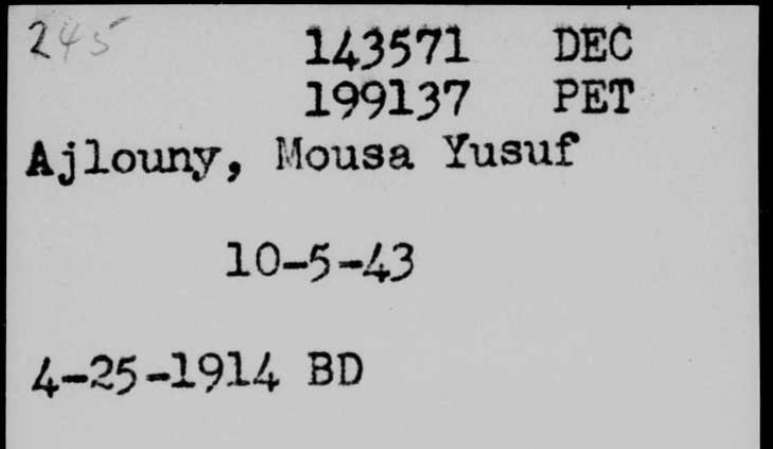
Screenshot from FamilySearch.org
This collection contains images of soundex cards to naturalization petitions. A guide to using a soundex appears at the beginning of most of the image ranges within this collection and corresponds with NARA publication M1917: Index Cards to Naturalization Petitions for the United States District Court for the Eastern District of Michigan, Southern Division, Detroit, 1907-1995. For additional information on soundex indexes see the wiki article, Soundex.
The records usually include the following information:
- Full name of citizen (sometimes a name change is indicated)
- Date naturalized
- Name of court
- Certificate number
United Kingdom – Northamptonshire – Baptisms
Findmypast offers more great finds in the collection titled Northamptonshire Baptisms. This collection contains over 14,000 transcripts of original baptism records and covers 34 parishes across the East Midlands county. These records cover the years 1559 through 1901.
The level of detail found each transcript will vary, but most will include names, baptism date, baptism place, the names of both parent’s, document reference, page, and entry number. Remember, these are transcripts only and do not contain an image of the original document.
United Kingdom – Northamptonshire – Hospital Admissions
The collection at Findmypast titled Northamptonshire, Northampton General Hospital Admissions 1774-1846 consists of over 126,000 transcripts of original admission registers held by the Northamptonshire record office. These transcripts will allow you to discover whether your ancestors were admitted to the hospital, when they were admitted, why they were admitted, and the year they were discharged. Most records will also reveal the nature of ailment and the outcome of their treatment.
More on African-American Genealogy
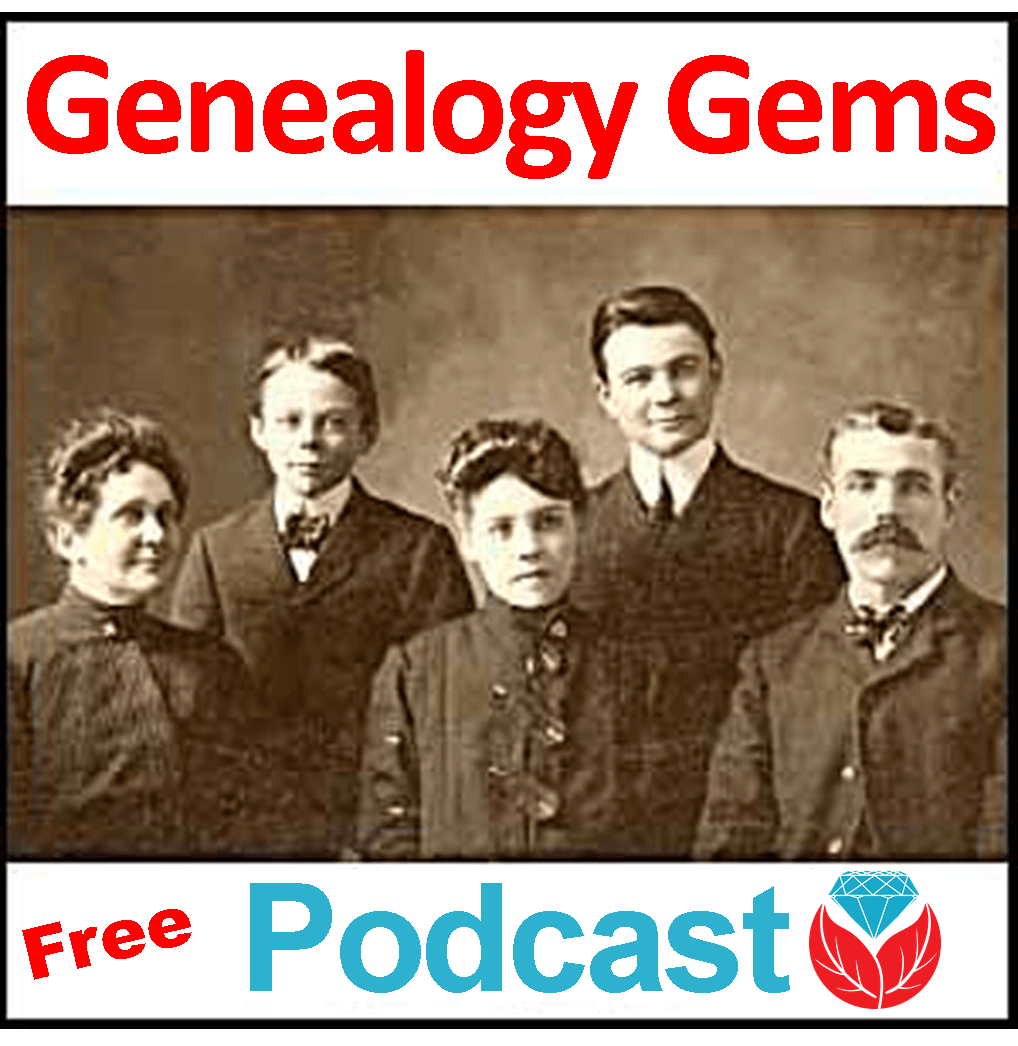 Coming up next month in The Genealogy Gems Podcast episode 201: An interview with Angela Walton-Raji on finding African-American ancestors. She shares tons of resources!
Coming up next month in The Genealogy Gems Podcast episode 201: An interview with Angela Walton-Raji on finding African-American ancestors. She shares tons of resources!
Even if you haven’t found any African-Americans on your family tree, the challenges and rewards of African-American genealogical research are both fascinating and moving to learn about. And, learn other tips and tricks for genealogy research by listening to our archived free podcasts.
by Lisa Cooke | May 4, 2015 | 01 What's New, images, Newspaper, Preservation, United States
 According to a news story by IowaWatch.org, current Iowa newspapers are piling up at the archives of the State Historical Society of Iowa in Des Moines, with no current plan to microfilm or otherwise preserve them.
According to a news story by IowaWatch.org, current Iowa newspapers are piling up at the archives of the State Historical Society of Iowa in Des Moines, with no current plan to microfilm or otherwise preserve them.
“Traditionally, the papers would have been sent off [for microfilming], but a 2009 budget cut ended that 50-year practice,” says the report. “A bill proposed last year would have provided funds for the backlog, but the Iowa Department of Cultural Affairs, which oversees the historical society, put on the breaks. It rejected the proposed funding citing pending completion of a master planning process and assessment study to evaluate what it has in the archives and how to preserve those materials in the future.”
Over 1500 bundles of newspapers await microfilm preservation, at an estimated cost of around a quarter million dollars. Officials state that they are reviewing a master plan for preserving all important materials in the state archive, not just newspapers. Click here to read the full story.
What can you do to ensure that today’s newspaper history lives on in your family
- Digitize current obituaries and articles that mention your family.
- Image meaningful headlines and write a journal entry about why they are important to you.
- Keep track of these images, full source citations and your thoughts in organizational software like Evernote and attach them to your family tree in your own software and in your online trees.
 Meanwhile, make the most of what historical newspapers had to say about your family. More of these papers are accessible online, either directly as digitized content or through microfilm rentals or research services you can learn about online. Learn more in Lisa’s book, How to Find Your Family History in Newspapers.
Meanwhile, make the most of what historical newspapers had to say about your family. More of these papers are accessible online, either directly as digitized content or through microfilm rentals or research services you can learn about online. Learn more in Lisa’s book, How to Find Your Family History in Newspapers.

 More Gems on Researching Recent Relatives
More Gems on Researching Recent Relatives

 Lisa, I enjoyed your article about trying to interview your husband, who is shy about being interviewed. My husband and I found a painless way to do an interview. When we are traveling he gets sleepy if no one is talking to him, so I decided interviewing him in an informal way about events in his life would serve two purposes. He wouldn’t get sleepy, and I would get information about his life story.
Lisa, I enjoyed your article about trying to interview your husband, who is shy about being interviewed. My husband and I found a painless way to do an interview. When we are traveling he gets sleepy if no one is talking to him, so I decided interviewing him in an informal way about events in his life would serve two purposes. He wouldn’t get sleepy, and I would get information about his life story. Hi Lisa, I love the story about a lady interviewing her husband while driving to keep him awake and to share his life stories. I too came up with a neat way to share my life story. Every year at Christmas time when my family gathers together I seem to always be asked to tell one of my stories, as I have a lot of stories, mostly very funny stories. Even at my former work my boss and co-workers would ask me to tell certain stories again.
Hi Lisa, I love the story about a lady interviewing her husband while driving to keep him awake and to share his life stories. I too came up with a neat way to share my life story. Every year at Christmas time when my family gathers together I seem to always be asked to tell one of my stories, as I have a lot of stories, mostly very funny stories. Even at my former work my boss and co-workers would ask me to tell certain stories again.
 kinds of records that may be out there waiting for you to discover. This week: Australian cemetery records, British military officer deaths, various U.S. passenger lists and North Carolina marriage records.
kinds of records that may be out there waiting for you to discover. This week: Australian cemetery records, British military officer deaths, various U.S. passenger lists and North Carolina marriage records. Tip: When searching within record sets like these, read the record collection description! Sometimes you are just seeing a partial collection that is being updated on an ongoing basis. Some years or locales may be missing from an otherwise complete record set.
Tip: When searching within record sets like these, read the record collection description! Sometimes you are just seeing a partial collection that is being updated on an ongoing basis. Some years or locales may be missing from an otherwise complete record set.





